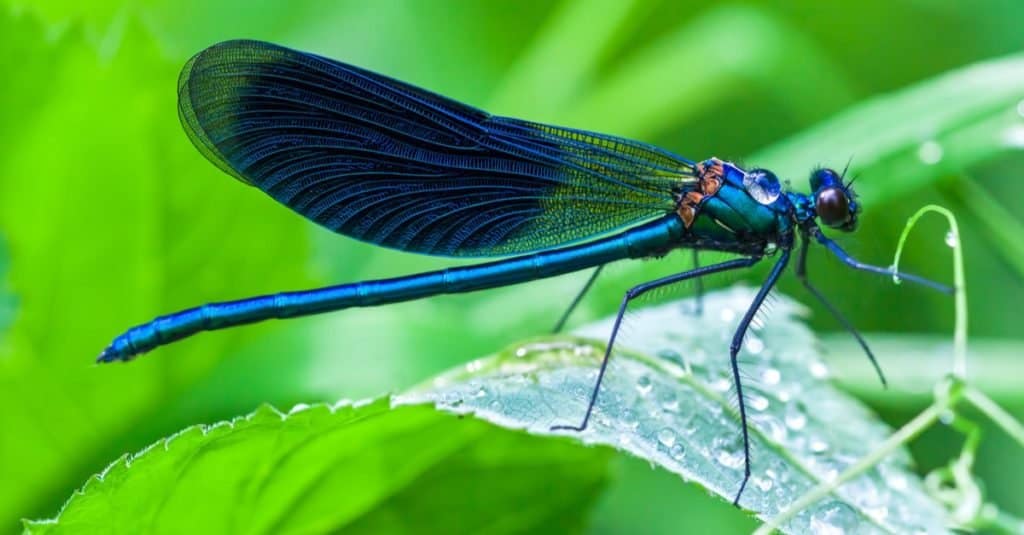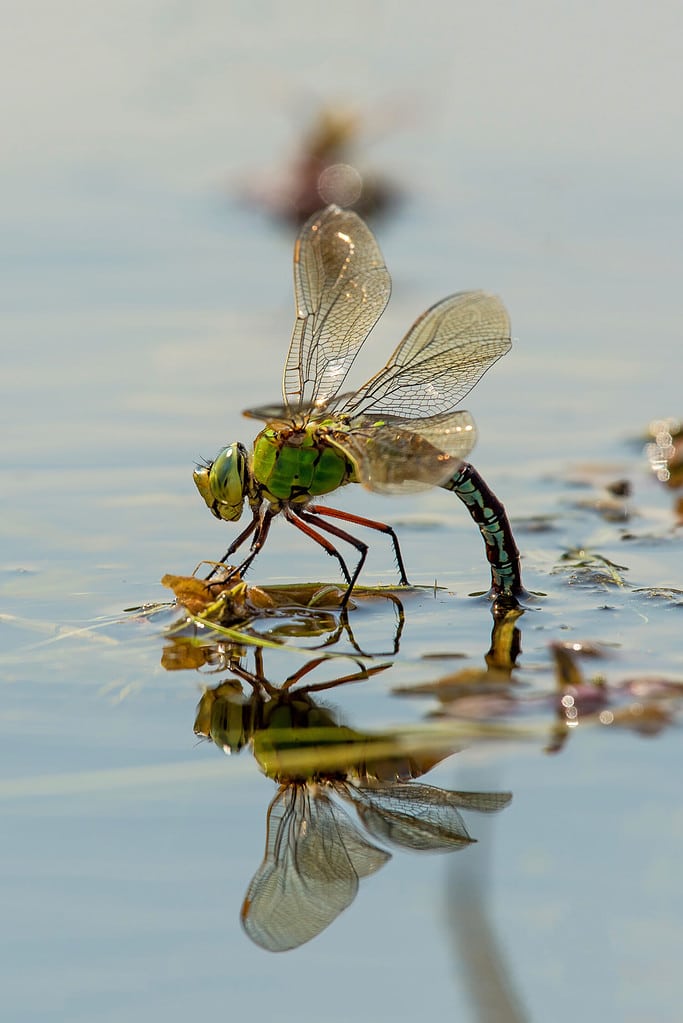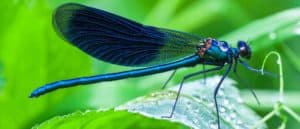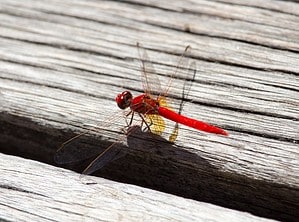Though there are several stories regarding how and why the dragonfly got its name, the term dragonfly is from Old English. The name reflects the essence of these airborne beings, whose iridescent wings and slender bodies evoke a sense of mythical wonder. Beyond linguistics, dragonflies flutter through the myths and folktales of various cultures as messengers of transformation and symbols of courage. Join us in a flight of imagination as we discover how dragonflies got their name.

Dragonflies flutter through the myths and folktales of various cultures as messengers of transformation.
©yanikap/Shutterstock.com
What is a Dragonfly?
The dragonfly is an insect of the order Odonata. Dragonflies have large eyes, slender bodies, and iridescent wings with colors that span the spectrum. Swift and graceful in their movements, dragonflies navigate the air with expert precision. These voracious predators provide a vital service by controlling insect populations, particularly mosquitoes. They’re not only good-looking, they’re also helpful! There are over 5,000 species of dragonflies. Though most are found in the tropics, temperate zones have their fair share. Immature dragonflies, or nymphs, are aquatic. While the nymph stage lasts up to five years in some species, adult dragonflies live no more than two months.

Dragonflies provide a vital service by controlling insect populations, particularly mosquitoes.
Origin of the name Dragonfly
The name dragonfly is derived from Old English. Old English was spoken between the 5th and 11th centuries A.D. The word dragoun in Old English referred to a mythical creature, usually a large serpent or sea monster. The Old English word fleoge referred to flying insects. When combined, dragounfleoge means dragon-like flying insect. Dragonfly became standard in the early 17th century. An earlier (15th century) less common name, adderbolt meaning the devil’s darning needle, became the Betamax of insect names, losing favor to the term we use today.

The dragonfly nymph stage lasts up to five years in some species.
©Hans Viveen/Shutterstock.com
Folklore
Dragonflies are central to the myths and folktales of many cultures. In Swedish lore, the Devil uses the dragonfly to measure the purity of souls. In Vietnamese culture, folklore states that if the dragonflies fly high, the weather will be calm and pleasant. However, if the dragonflies are flying low, it predicts rain. After being cursed by the Devil, St. George’s horse became a dragonfly in a Romanian tale. In the United States, one story tells that dragonflies stitch closed the mouths of liars!
Five Fun Facts about Dragonflies
- Dragonflies were among the first winged insects to evolve 300 million years ago. Unlike the dragonflies of today, prehistoric dragonflies had wingspans of 2 feet (0.6 m)!
- In Darwin, Australia, local legend says that a large group of dragonflies portends a change in the weather from wet to dry.
- Dragonflies can fly forward, backward, and upside down, and they can change direction quickly.
- Dragonflies are expert hunters, landing up to 95% of their targeted prey.
- Dragonflies can fly up to 35 miles per hour (56.3 kph).
The photo featured at the top of this post is © AgriTech/Shutterstock.com
Thank you for reading! Have some feedback for us? Contact the AZ Animals editorial team.







